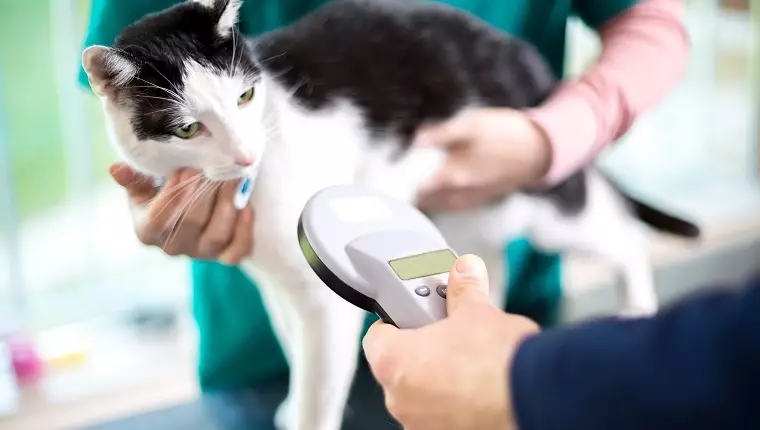As the blooms of May usher in vibrant springtime, it also signals an essential reminder for pet owners — May is Chip Your Pet Month. This initiative underscores the often-overlooked significance of microchipping our furry companions. Unfortunately, many cat owners hold misconceptions about microchips, particularly regarding their importance for indoor cats. Some may mistakenly believe that since their cats remain indoors, they do not require any form of identification. However, this could not be further from the truth.
Microchips have proven to be an invaluable resource in reuniting lost pets with their owners. Research from Petfinder reveals a striking disparity: while only 2% of lost cats that end up in shelters find their way back home, this statistic jumps to 38% for microchipped felines. This significant increase highlights the crucial role of microchips in pet safety. As such, understanding what microchipping entails can be the first step every pet parent should take towards protecting their beloved cats.
Microchipping is akin to the modern equivalent of the traditional collar and name tag that many pet owners remember fondly. In the event that a cat becomes lost, a microchip provides a reliable means of tracing back to the owner’s information, facilitating a swift reunion. The microchip itself is minuscule, roughly the size of a single grain of rice, and is typically inserted under the skin between the shoulder blades through a simple injection performed by a veterinarian.
It’s essential to clarify that microchips do not function like GPS systems; they do not track the movements of your pet. Instead, they serve as a permanent form of identification, enabling shelters and veterinary offices to retrieve your contact information if your pet is found. Many of these facilities possess the necessary technology to read microchips, thus increasing the odds of reuniting lost pets with their owners.
Getting your cat microchipped is both an accessible and relatively affordable process. The cost is typically around $50 at most veterinary clinics, though you may find discounts available at special animal health events or through local shelters. Moreover, if you’ve adopted your cat from a shelter, it’s worth checking your parent paperwork, as many facilities microchip their pets prior to adoption. In such cases, simply updating the information in the microchip’s database is all that’s needed to ensure your cat’s safety.
For pet owners seeking low-cost options, keep an eye out for community events known as “chip-a-thons.” Many animal organizations host these occasions to promote pet identification and safety, often at reduced prices.
While microchips are incredibly useful, it’s vital to recognize their limitations. For instance, if a neighbor finds your lost cat, they may not have the capability to scan for a microchip, and might not know the correct protocol for handling lost pets. This is where ID tags come into play. A simple tag listing your phone number can bridge the gap between finding a lost pet and returning them safely home.
It’s advisable to take a comprehensive approach to your pet’s safety by pairing microchips with traditional identification methods. Ensure that your cat wears a collar with a visible tag whenever they venture outside, as this can provide immediate identification for anyone who may come across them. Just as you would take precautions for your loved ones, doing so for your pets also matters immensely.
In light of Chip Your Pet Month, it’s even more relevant for pet owners to evaluate whether their cats are microchipped and actively participate in spreading awareness. Make it a habit to discuss the benefits of microchipping with fellow pet owners, share information through social media, and encourage others to ensure their pets are identified properly.
Ultimately, the safety and well-being of your beloved feline depend greatly on proactive measures taken before a crisis occurs. Microchips and identification tags are relatively simple steps to ensure that your cat can always find its way back to you, should it ever get lost. So, take action this May and prioritize your pet’s safety and security — it’s one of the best gifts you can give your furry family member.


Leave a Reply